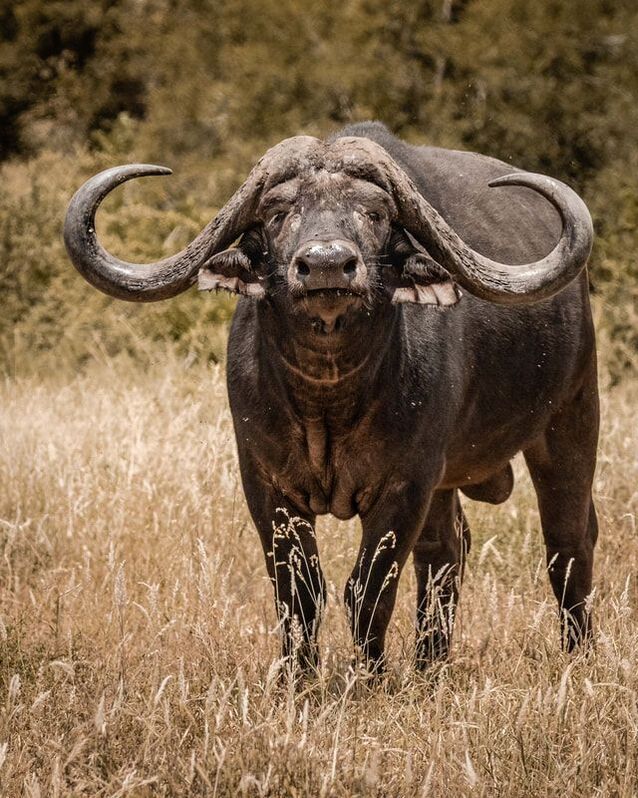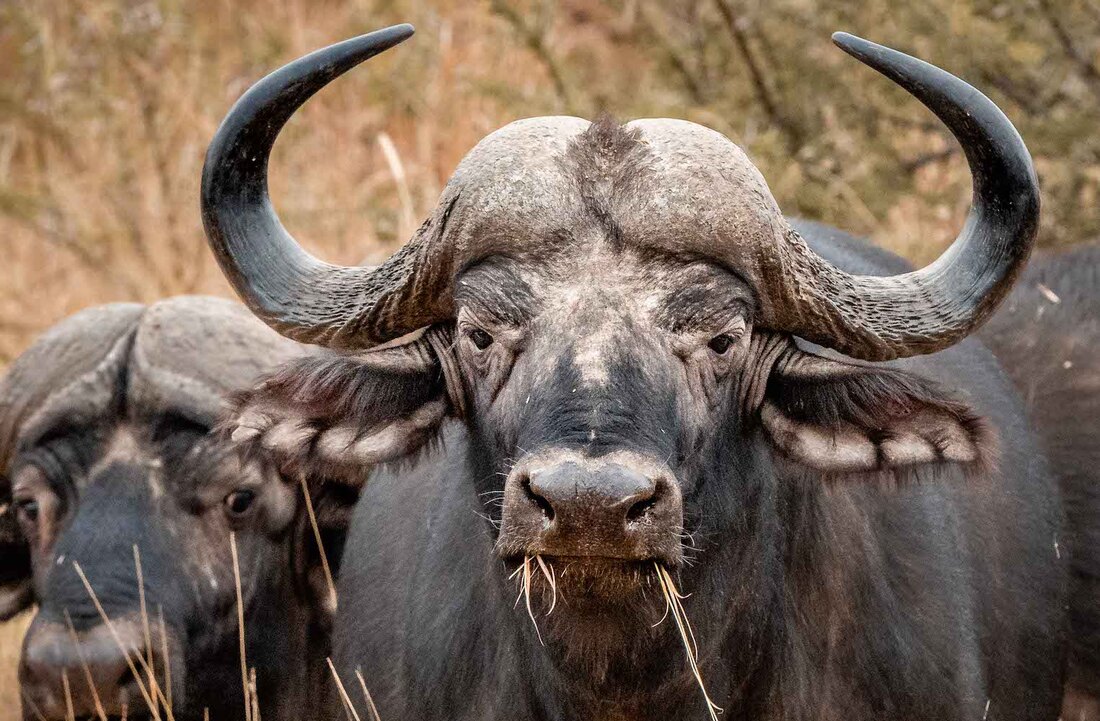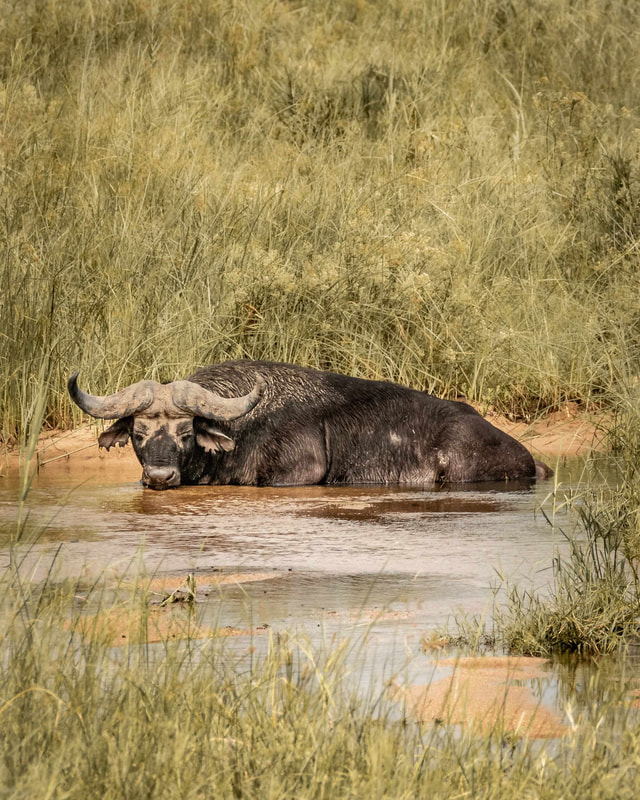|
The male buffalo or “bull” is truly competitive by nature. They regularly compete for breeding and ranking within the gang, through head on clashes. In this case the strongest bull may mate with the female or lead the rest of the gang. As a male, I am heavier and larger than the female species, weighing 650-800 kilograms. To determine my gender, you could identify the huge lumps at the start of my horns (Otherwise known as a ‘boss’). This is something that cow Buffaloes do not have. We often cover ourselves in mud to get rid of the insects which pester us. Another way we can do that is through Ox peckers. We are known to have a symbiotic relationship with these birds as they help us get rid of insects and alert us of danger. When any one of our gang members sense danger, they alert the entire herd. We then form a barrier, keeping the calves and cows sheltered while we stand in the frontline. We may also cause a stampede in defence. Those of us who have reached sexual maturity and are no longer able to compete for a mate, will naturally form a herd and stick together. During the dry season we split up from the herd and form bachelor groups, during the wet season the younger bulls re-join the gang to mate with the cows and protect the calves. The preservation of the Buffalo species is the preservation of various other species. According to the Animal Diversity Web [2015], their grazing opens vegetation for species such as Zebra or Wildebeest who follow the path of the buffaloes. This is due to their cyclical grazing which manipulates the vegetation within their habitat. (It allows the growth of grass and herbs between the cycles.) The male Buffalo as shown above; is important for the protection of the rest of the herd in times of danger, for this reason we believe it is vital to protect the species at all costs so that they do not face danger in the future. What do Cape Buffalo consume?Cape buffalo are herbivores, which means they consume solely plants. Although their aggressive attitude appears to be that of carnivores, they are solely adapted to digest plants and herbs, with grass and shrubs being their favorites. They may consume insects on occasion, although this is quite unusual. They often feed at night or during cool parts of the day, letting them to concentrate on survival under harsh weather conditions. Because of their huge size, water input is required, and they must never be more than nine miles (15 km) from a river. Where exactly do Cape Buffalo live in Africa?Cape Buffalo are very common across Africa, but notably in the southern area. Uganda has the highest population density, whereas higher regions like as Chad and Algeria have lower densities. Due to the presence of water, Cape Buffalo flourish in locations such as wetlands or floodplains. These climates are often found exclusively in Central and Southern Africa, which limits migration north. Cape Buffalo may also be found in montane grasslands and the forests of Africa's main ranges. It is said that they are not an endangered species because of their climatic variety, which allows for optimal reproduction. What types of habitats do Cape Buffalo live in?Cape Buffalo inhabit a wide variety of habitats, from semi-arid bushlands and montane grasslands to coastal savannas and lowland rainforests. It is critical to note that cape buffalo require access to water, which includes rivers, lakes, swamps, and floodplains. Because these buffalo like to dwell in long grass, they are known as "grazers." Buffalo herds mow down grasslands with ease. Cape buffalo, thanks to its unusual tongue, can graze on grass with a rapid incisor action, allowing them to out-eat most other African herbivores. Unlike other big African animal herds, Cape buffalo herds often include more than 1,000 individuals at any given time, making hunting exceedingly difficult. Comments are closed.
|
Categories
All
Archives
October 2023
|





